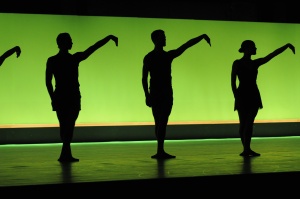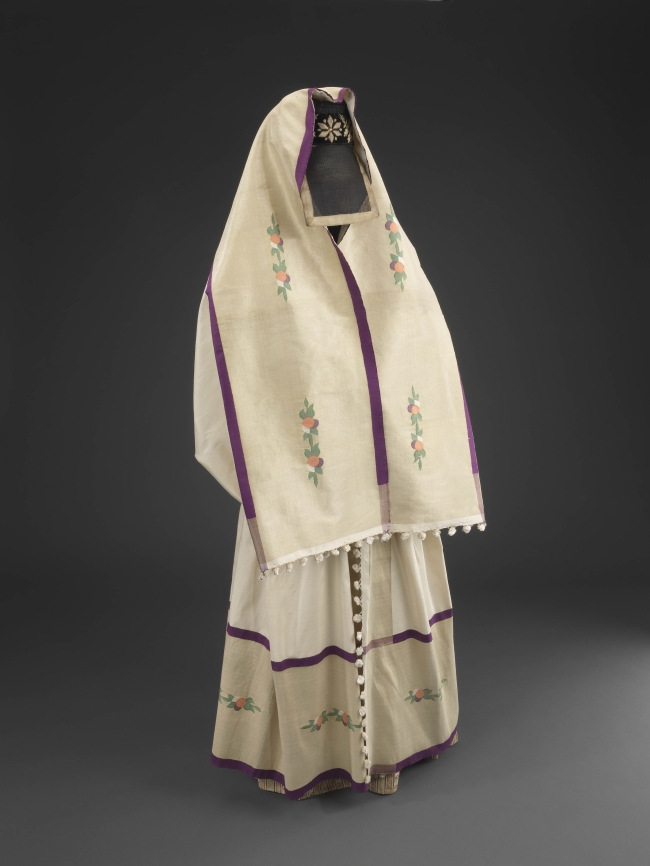My trip to the afterlife of stories began with a simple question at the dinner table:
“What was the name of the city in Albania that Cicero visited?”
A typical question in our household. My husband is the history buff and great synthesizer of historic events; I’m the one who remembers names and dates—usually.
I knew which place he meant: the ancient Roman city, now a UNESCO World Heritage site, at the southern tip of Albania. But the name escaped me. I knew it wasn’t Gjirokaster, the birthplace of the Nobel Prize-winning Albanian novelist Ismail Kadare, and that it wasn’t Kruje to the north, the home of the national hero, Skanderbeg.
The quickest way to find out was to check my story about Albania that had appeared in Hadassah magazine in 2012. In a trice I found the name: Butrint. And then I scrolled down and discovered that my travel story had taken on a life of its own, long after I had moved on to writing about other places. It had never occurred to me to look for comments years after a story had appeared. Thus began a journey of discovery, particularly interesting now that other kinds of travel are but a memory or a dream.
The comments section on Albania began with posts three years after the story appeared. In May 2015, Leonie Lachmish wrote to ask, “Do you know how one can see the ancient synagogue in Sarande?” Then, in connection with the Albanians’ protection of Jews during World War II, she raised an issue that has been discussed elsewhere online. “I wish there were trips for Jewish tourists who believe we have a pleasant duty to visit countries that acted righteously and saved Jews’ lives in the darkest of times. I would so love to meet descendents of families who saved Jews.”
Leonie’s wish was followed by proposals of ambitious projects. In December that year, Anton asked about Berat, another UNESCO World Heritage Site in Albania. On the outskirts of the town, according to one tradition, the 17th century mystic and false messiah Shabbetai Zevi lies buried in Varri i Çifutit (Tomb of the Jew).
“I am going to Berat… and I like to see the Tomb of the Jew! (Varri I cifutit),” Anton wrote. “It may be interesting to even find out the DNA inside it. Can be the tomb of Sabbatai Z. there maybe.”
In January 2017, Migena wrote, “I always thought that language bridge[s] nations closer. Albania-Israel relationship must not be stopped at…WWII: why not bringing Hebrew language in Albania?”
Migena added that she comes to Israel every year to attend an ulpan and hopes eventually to be able to translate Hebrew literature into Albanian.
Handrim had a similarly ambitious project. In November 2018 he wrote about rebuilding the ancient synagogue in Sarande: “There are so many levels why this would be great…It is not only a dream. It is a project. Maybe my life project. If anyone of you have an idea, please contact me!”
The comments were both moving and intriguing, stirring the fondest memories of a beautiful and hospitable country (albeit with impossible roads). Then I wondered whether others of my travel stories had a similar afterlife.
So I looked up my article on Macedonia, which appeared in October/November 2013 and in which I mentioned in passing that the country’s “name—identical to that of a neighboring region in northern Greece where Alexander the Great was born—and its claim to Alexander as its own national hero have generated a dispute between the two countries that is threatening Macedonia’s entry into the European Union.” Prior to the country’s recent name change to Republic of North Macedonia, it was known as the Former Yugoslav Republic of Macedonia (FYROM).
A year after the story appeared, Nick the Greek riffed on the dispute about the name and the history in a 532-word tirade, including the following:
“Macedon is Greek Kingdom same as Sparta is Greek Kingdom – Both are Dorian, and both Greek. If minor Slavic country today, stepped on to world stage and claimed the name of Spartan Kingdom for country-name…sovereign state-name, nationality, language and ethnicity – How should the West react to such anti-Hellenic action?”
But Nick couldn’t let it go at that, and in December and the following January he continued flogging the point at length. Radio silence ensued for six years, until JR, in June 2020, saw fit to set Nick the Greek straight about where his fulminations were appearing: “This is a post about the Jewish population that lived and still lives in the current Balkan region. This is not about Greece.”
Most comments, however, were benign. Some were attempts to play Jewish geography (sorry, I’m not related to your relatives in La Jolla or San Diego). Some even revealed a sense of humor, such as the welcome correction by Tammy Schneider to my article on New Hampshire (April/May 2016) in which I had mistakenly located Nashua southeast of Portsmouth:
“Nashua is southWEST of Portsmouth,” she wrote. “If you went southeast of Portsmouth, you’d be riding the whales in the Atlantic Ocean!
Others had fascinating information to add. Don Perlgut, a Dartmouth alumnus, expanded on that college’s history of restricted Jewish admissions. “The post-war period is the interesting one, [when] there were no official Jewish restrictions [but rather] an official – and publicly stated – “geographic diversity” policy that actively and openly discriminated in favour of young men…from places like Wyoming, Montana, Indiana, Texas, Alaska, Idaho, Kentucky, etc. [and] against people from New Jersey, New York, Connecticut, Massachusetts, Maryland, etc: a de facto Jewish quota.”
Concerning neighboring Vermont, Martha Ginsburg Roditti had the following to add to my story that appeared in July 2017: “I was born in Granville, NY [on the border of New York and Vermont] and heard stories of the Poultney Cemetery. My father and Grandfather were very active in the small Granville congregation. My father had the honor of keeping the Torahs in our house for the High Holy Days (which were conducted in the Grange Hall).”
With regard to Milwaukee (November 2019), Rachel Krug recalled that her father immigrated to Milwaukee “and had often bragged how with his Heder training [he] was able to assist one Golda Meyerson [Golda Meir] with her Hebrew.”
But my favorite discovery on this electronic journey was a comment on my article that appeared in February/March 2014 on the 100th anniversary of a daring and seemingly impossible mission: the attempt by two brave Turkish pilots to fly more than 1,500 miles from Istanbul to Jerusalem and ultimately to Cairo and Alexandria. They never reached their destination: Their flimsy plane, made of wood and fabric, crashed near Tiberias. Yerach Paran, a member of Kibbutz Ha’on, has built a garden surrounding the memorial to the pilots at the site of the crash and tends it every weekend.
In June 2020, six years after my article appeared, the comments section, which up to that point had only occasional posts from former volunteers in Kibbutz Ha’on, showed a trackback—in Turkish. It turned out to be another story about the two pilots, highlighting the
Turkey–Israel connection, that appeared in Avlaremoz, an online publication covering Jewish and minority topics in Turkey. It included a link to the announcement of the 2001 Turkish documentary on the expedition, made with planes of that era. Seeing the story of the brave pilots again (which I read with the help of Google Translate) of a time when travel involved perils very different from those of the novel coronavirus.
As so often, I have my husband to thank for sending me on this virtual journey and I have the readers to thank for the comments I discovered. May the conversation continue!
Copyright 2020 by Esther Hecht. No part of this post may be copied or used in any way without written permission of the author.











